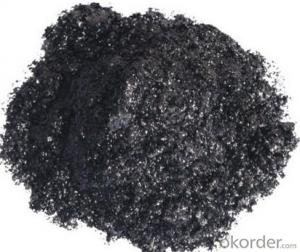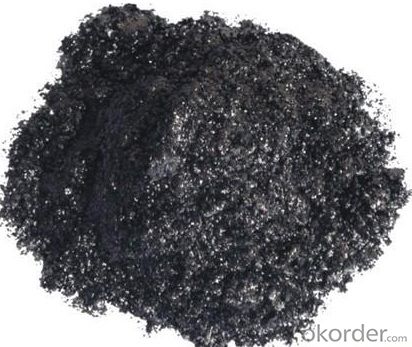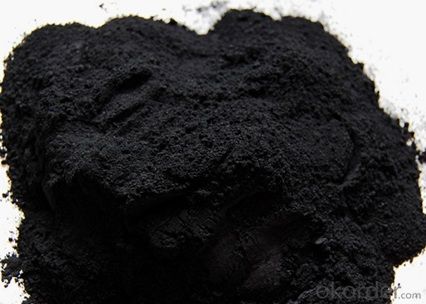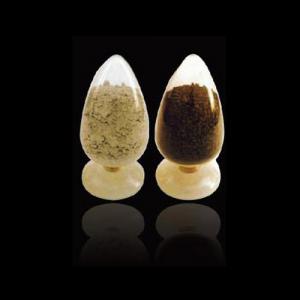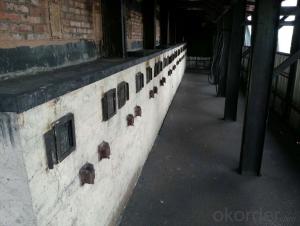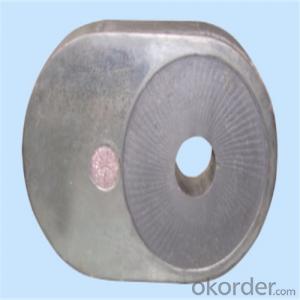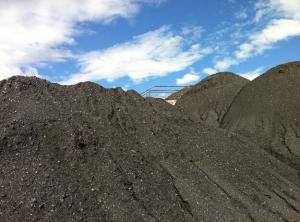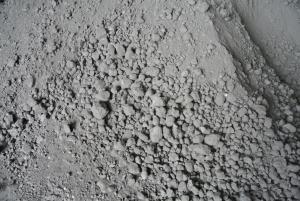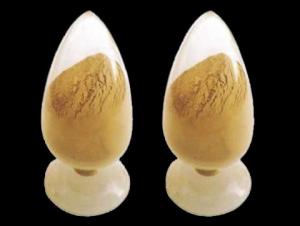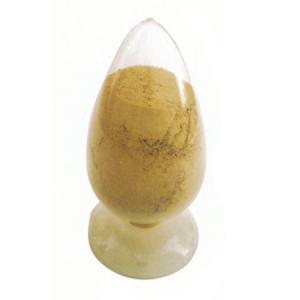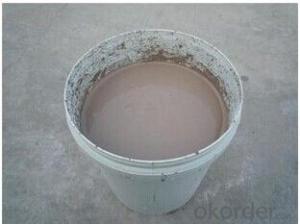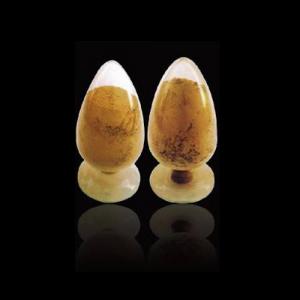Monolithic Refractories for Iron and Steel Industry:Coke Powder Based Brake Pad Making Material
- Loading Port:
- Shekou
- Payment Terms:
- TT or LC
- Min Order Qty:
- 20 m.t
- Supply Capability:
- 1000 m.t/month
OKorder Service Pledge
OKorder Financial Service
You Might Also Like
Calcined Petroleum Coke
FC:98.5%min,
S:0.5%max
A:0.8%max
V:0.7%max
Mositure:0.5%max
Size:1-5mm
Description
This product is mainly used in steel-making and foundry. Calcined Petroleum Coke
Calcined Petroleum Coke comes from delayed coke which extracted from oil refinery. Although Calcined Petroleum Coke contains a little bit higher level of sulfur and nitrogen than pitch coke, the price advantage still makes it widely used during steel-making and founding as a kind of carbon additive/carburant.
Technology:
Laborary Equpment
In our lab,we has a high precision balance,mullfe furnace,sample making machine, dring box,sulfur measurement instrument and other calibratiing equipments.As a result,before deliverung to our customers,our products have to pass a strict test to ensure the quality and components.The testing reports will be sent to our customers to confirm untill they satisfy with it.
Packaging & Delivery
Packaging Detail:25kg paper bag into 1t weaving bag 5kg, 10kg and 20kg weaving bag into 1t weaving bag 25kg weaving bag put on pallet covered with entanglement wrap product direct into packing bag 25kg paper bag put on pallet covered with entanglement Wrap 25kg weaving bag into 1t weaving bag.
Delivery Details: 7 days
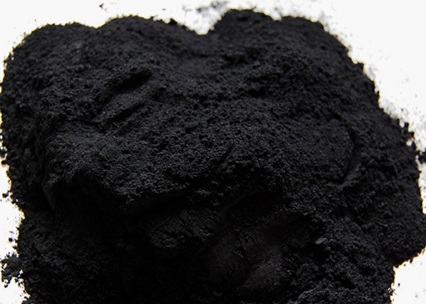
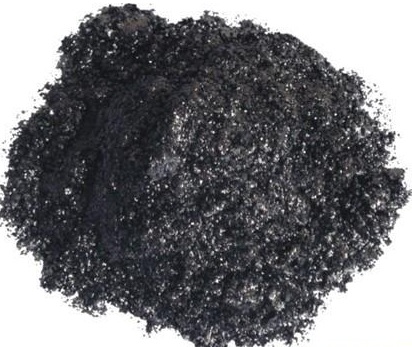
If you’ve kind enquiries, please don’t hesitate to let us know. ^_^
- Q: How do monolithic refractories contribute to the overall productivity of iron and steel plants?
- Monolithic refractories play a crucial role in enhancing the overall productivity of iron and steel plants. These refractories are characterized by their ability to be shaped and installed without the need for joints or mortar, making them highly versatile and efficient. One major contribution of monolithic refractories to the productivity of iron and steel plants is their ability to withstand high temperatures. These refractories are designed to have excellent thermal shock resistance, meaning they can withstand rapid changes in temperature without cracking or breaking. This allows them to be used in various high-temperature applications such as blast furnaces, converters, and ladles. By using monolithic refractories in these critical areas, iron and steel plants can operate at higher temperatures, leading to increased production rates. The refractories provide effective insulation, reducing heat losses and improving energy efficiency. This results in cost savings and higher output for the plant. Furthermore, monolithic refractories are known for their excellent resistance to chemical attacks from molten metals and slags. They can withstand the corrosive effects of molten iron, steel, and other alloys, protecting the underlying structures and extending their lifespan. This reduces downtime for maintenance and repairs, allowing for continuous operation and higher productivity. Moreover, monolithic refractories offer easy installation and maintenance, which further contributes to productivity. Unlike traditional refractories that require time-consuming bricklaying and jointing, monolithic refractories can be sprayed, troweled, or pumped into place, saving both time and labor costs. Additionally, their ability to be easily repaired or replaced without major disruptions to the production processes ensures minimal downtime, maximizing overall plant productivity. In summary, monolithic refractories enhance the productivity of iron and steel plants by withstanding high temperatures, providing insulation and energy efficiency, resisting chemical attacks, and offering easy installation and maintenance. Their ability to perform under extreme conditions and their cost-effective nature make them an essential component in the iron and steel industry, contributing to increased output and profitability.
- Q: What are the common failure modes of monolithic refractories in iron and steel applications?
- Monolithic refractories, known for their exceptional thermal shock resistance, high temperature stability, and mechanical strength, find extensive use in iron and steel applications. However, like any other material, they are susceptible to failure. Numerous failure modes are associated with monolithic refractories in iron and steel applications. 1. Spalling, the detachment of refractory material from the surface, stands as one of the most prevalent failure modes. This detachment occurs due to thermal cycling, mechanical stress, or chemical reactions. Mismatched thermal expansion coefficients between the refractory and the surrounding structure can lead to cracking and subsequent detachment. 2. Erosion, another common failure mode, arises when the refractory material encounters the erosive action of molten metal, slag, or gases. Physical impact from flowing metal or chemical attack by corrosive slag components can contribute to erosion. This results in the loss of refractory material, reduced lining thickness, and compromised performance. 3. Corrosion, a significant failure mode, particularly affects iron and steel applications in contact with aggressive atmospheres or molten metal. The interaction between the refractory material and corrosive agents, such as oxides, sulfides, or alkalis present in the environment, leads to corrosion. Corrosion products weaken the refractory lining and shorten its lifespan. 4. Thermal shock, caused by extreme temperature fluctuations, poses a risk to monolithic refractories in iron and steel applications. Rapid heating or cooling can trigger thermal shock, resulting in cracking and failure of the refractory material. Thermal shock can occur due to uneven heating or cooling, sudden temperature changes, or thermal gradients within the refractory lining. 5. Abrasion is a potential failure mode in specific iron and steel applications, where monolithic refractories are exposed to abrasive wear. This wear occurs when the refractory lining comes into contact with solid particles like metallic oxides, slags, or raw materials. The repeated impact and rubbing action of these particles cause erosion and abrasion of the refractory material, leading to failure. To mitigate these failure modes, it is crucial to select appropriate refractories, employ proper installation techniques, and practice regular maintenance. Regular inspections, repair of damaged areas, and the application of protective coatings can greatly enhance the lifespan and performance of monolithic refractories in iron and steel applications.
- Q: What are the quality control measures for monolithic refractories in the iron and steel industry?
- The quality control measures for monolithic refractories in the iron and steel industry include strict material selection, thorough testing of raw materials, regular inspection and maintenance of refractory linings, and continuous monitoring of performance during operation. Additionally, adherence to industry standards and specifications, implementation of quality management systems, and collaboration with suppliers and customers to address any quality issues are also important measures in ensuring the quality of monolithic refractories in the iron and steel industry.
- Q: What are the common failure mechanisms of monolithic refractories in the iron and steel industry?
- Common failure mechanisms of monolithic refractories in the iron and steel industry include: 1. Thermal spalling: Monolithic refractories are exposed to extreme temperature changes during the iron and steel production process. These rapid temperature fluctuations can cause the refractory material to expand and contract, leading to thermal stress and ultimately spalling. This failure mechanism is particularly common in areas where the refractory is exposed to high temperatures, such as in the hot face of a furnace. 2. Chemical attack: The iron and steel production process involves the use of various chemicals and molten metal, which can react with the refractory material over time. Chemical attack can cause the refractory to deteriorate, leading to cracks, erosion, and ultimately failure. Common culprits include slag, alkalis, sulfur, and other impurities present in the production environment. 3. Abrasion: The movement of materials, such as iron ore, coke, and fluxes, can cause abrasion on the refractory lining. This mechanical wear and tear can weaken the refractory material, leading to its failure. Abrasion is particularly prevalent in areas that experience high material flow rates or turbulence, such as in the taphole or launder systems. 4. Corrosion: Monolithic refractories can be subjected to corrosion from the gases, liquids, and solids present in the iron and steel production environment. Corrosion can occur due to the presence of oxygen, water vapor, and various chemical species, such as carbon monoxide and sulfur compounds. It can lead to the formation of corrosive products, such as oxides or sulfides, which degrade the refractory material over time. 5. Mechanical stress: Monolithic refractories may experience mechanical stress due to factors like thermal expansion and contraction, vibration, or mechanical impact. Excessive mechanical stress can cause cracks or fractures in the refractory lining, compromising its integrity and leading to failure. To mitigate these failure mechanisms, proper selection of refractory materials, regular inspection, and maintenance are crucial. Additionally, designing refractory linings considering the specific operational conditions and using appropriate installation techniques can help enhance their performance and lifespan in the iron and steel industry.
- Q: What are the challenges faced in the application of monolithic refractories?
- The application of monolithic refractories presents several challenges. Firstly, a major hurdle is the correct installation of these refractories. Unlike traditional brick refractories that can be easily stacked, specialized skills and techniques are required for the proper application of monolithic refractories. The consistency and workability of the refractory material must be carefully controlled, and specialized equipment such as gunning machines or vibrating tools are often necessary for the installation process. Another challenge lies in selecting the appropriate monolithic refractory material for a specific application. There are various types of monolithic refractories available, each with its own unique properties and suitability for different environments. Choosing the wrong type of refractory material can lead to premature failure and expensive repairs. Therefore, it is crucial to understand the operating conditions, including temperature, chemical exposure, and mechanical stress, in order to select the most suitable monolithic refractory material. Additionally, monolithic refractories are prone to thermal shock and erosion due to their composition and method of application. They are typically made from fine powders that are mixed with water or other binding agents to form a paste. This paste is then applied and dried to create a solid refractory lining. However, during the heating and cooling cycles, monolithic refractories can experience thermal expansion and contraction, resulting in cracks and spalling. Furthermore, chemical reactions occurring in certain industrial processes can cause chemical attack and erosion of the refractory lining, reducing its lifespan. Furthermore, the maintenance and repair of monolithic refractories can also pose a challenge. Unlike brick refractories that can be easily replaced, repairing monolithic refractories often requires skilled personnel and specialized techniques. The damaged area must be removed, and a new layer of refractory material must be applied, ensuring proper bonding and compatibility with the existing lining. This process can be time-consuming and costly, especially in high-temperature applications where extended downtime can result in significant production losses. In conclusion, the application of monolithic refractories presents challenges in terms of proper installation techniques, material selection, susceptibility to thermal shock and erosion, and complex maintenance and repair procedures. Overcoming these challenges requires expertise, careful planning, and a comprehensive understanding of the specific operating conditions and requirements for each application.
- Q: What are the advantages of using low-cement castables in the iron and steel industry?
- There are several advantages of using low-cement castables in the iron and steel industry. Firstly, low-cement castables have a lower water requirement compared to conventional castables. This means that less water is needed during the installation process, resulting in a quicker and more efficient installation. Additionally, low water content leads to better strength development and reduced drying time, allowing for faster turnaround times in the production process. Secondly, low-cement castables offer superior resistance to thermal shocks and high temperatures. The iron and steel industry operates at extremely high temperatures, and low-cement castables have excellent refractory properties that can withstand these harsh conditions. This ensures a longer service life for the refractory lining and reduces the need for frequent repairs or replacements. Furthermore, low-cement castables exhibit excellent mechanical strength and abrasion resistance. The iron and steel industry involves the handling of heavy materials and abrasive substances, which can cause wear and tear on the refractory lining. Low-cement castables have the ability to withstand these mechanical stresses, thereby increasing the durability and longevity of the lining. Moreover, low-cement castables have a low porosity and high density, which results in reduced permeability. This makes them highly resistant to alkali attacks, chemical corrosion, and slag penetration, which are common challenges faced in the iron and steel industry. By using low-cement castables, the risk of refractory failure due to these corrosive elements is minimized. Lastly, low-cement castables offer improved energy efficiency. Their lower thermal conductivity means that less heat is conducted through the refractory lining, resulting in reduced heat losses. This leads to energy savings, as less heat is wasted and more heat is retained in the system. This is particularly advantageous in the iron and steel industry, where energy costs can be significant. In summary, the advantages of using low-cement castables in the iron and steel industry include reduced water requirement, superior thermal resistance, enhanced mechanical strength, improved resistance to chemical corrosion, and increased energy efficiency. These benefits contribute to overall cost savings, increased productivity, and improved operational performance in the iron and steel manufacturing process.
- Q: How do monolithic refractories withstand high temperatures in iron and steel processing?
- Due to their unique composition and design, monolithic refractories have the capability to endure high temperatures in iron and steel processing. Unlike refractories composed of multiple layers, these refractories are made from a single, solid material, which grants them superior thermal conductivity and resistance to thermal shock. One crucial factor that enables monolithic refractories to withstand high temperatures is their high melting point. Typically composed of materials like alumina, magnesia, silica, or zirconia, these refractories possess melting points that exceed the temperatures encountered in iron and steel processing. This ensures that the refractories do not deteriorate or melt when exposed to such extreme temperatures. Additionally, monolithic refractories exhibit excellent thermal insulation properties. With low thermal conductivity, they effectively impede heat transfer from the hot molten metal or gases to the surrounding environment. This insulation property helps sustain high temperatures within the processing units, ensuring efficient and effective iron and steel production. Another significant aspect contributing to the ability of monolithic refractories to withstand high temperatures is their resistance to thermal shock. In iron and steel processing, rapid temperature changes are frequent, which can lead to cracking or spalling in traditional refractories. However, monolithic refractories possess a more homogeneous structure and greater flexibility, enabling them to endure these sudden temperature fluctuations without significant damage. Apart from their composition, the installation method of monolithic refractories also plays a role in their ability to withstand high temperatures. Typically, these refractories are installed using a technique called gunning or shotcreting, where a mixture of refractory material and water is sprayed onto the surface, forming a dense and solid lining. This installation method ensures a strong bond between the refractory and the substrate, enhancing the overall strength and durability of the lining. Overall, monolithic refractories can withstand high temperatures in iron and steel processing due to their high melting point, excellent thermal insulation properties, resistance to thermal shock, and proper installation techniques. These refractories are essential in maintaining the integrity and efficiency of the processing units, facilitating the production of high-quality iron and steel products.
- Q: How do monolithic refractories contribute to the reduction of emissions in iron and steel plants?
- Monolithic refractories play a crucial role in reducing emissions in iron and steel plants by providing various benefits and solutions to the environmental challenges faced by these industries. Firstly, monolithic refractories are used to line the high-temperature zones of furnaces, such as blast furnaces and electric arc furnaces, that are integral to the iron and steel production processes. These refractories have excellent thermal insulation properties, which help to minimize heat loss and improve energy efficiency. By reducing heat loss, less fuel is required to maintain the desired temperature, resulting in lower energy consumption and subsequently lower emissions. Furthermore, monolithic refractories also contribute to emissions reduction by enhancing the combustion process. They are designed to resist thermal shock and withstand extreme temperatures, ensuring that the furnaces operate at optimal conditions. This, in turn, leads to more efficient combustion of fuels and raw materials, reducing the release of harmful gases and pollutants into the atmosphere. In addition to their thermal properties, monolithic refractories also possess excellent resistance to chemical attacks and corrosion. This is particularly important in iron and steel plants, where aggressive substances such as molten metal, slag, and gases are present. By providing a protective lining, these refractories prevent the degradation of furnace walls and other equipment, reducing the risk of leaks and emissions. Moreover, monolithic refractories are often used in the construction of pollution control devices, such as flue gas desulfurization systems and baghouses. These systems are designed to capture and remove pollutants from the flue gases generated during iron and steel production. The use of refractories in these applications ensures the durability and longevity of these systems, allowing them to operate efficiently and effectively in reducing emissions. Overall, monolithic refractories contribute significantly to emissions reduction in iron and steel plants through improved energy efficiency, enhanced combustion, corrosion resistance, and support for pollution control systems. By implementing these refractories, the industry can minimize its environmental footprint and move towards more sustainable and responsible production processes.
- Q: How do monolithic refractories withstand chemical attack from molten metals and slag?
- Monolithic refractories withstand chemical attack from molten metals and slag due to their unique composition and properties. These refractories are made of a single, homogeneous material, which provides them with better resistance against chemical corrosion. Additionally, monolithic refractories are designed to have low porosity and high density, which limits the penetration of molten metals and slag into their structure. These materials also have high melting points, enabling them to withstand the extreme temperatures present in industrial processes. Overall, the combination of their composition, low porosity, high density, and high melting points makes monolithic refractories highly resistant to chemical attack from molten metals and slag.
- Q: What are the main challenges in designing the lining system with monolithic refractories?
- The main challenges in designing the lining system with monolithic refractories include ensuring proper installation and curing, achieving adequate strength and durability, managing thermal expansion and contraction, controlling shrinkage and cracking, and maintaining chemical resistance against corrosive environments. Additionally, the selection of suitable raw materials, proper mixing techniques, and effective installation methods are crucial to overcome these challenges and ensure a successful lining system design.
Send your message to us
Monolithic Refractories for Iron and Steel Industry:Coke Powder Based Brake Pad Making Material
- Loading Port:
- Shekou
- Payment Terms:
- TT or LC
- Min Order Qty:
- 20 m.t
- Supply Capability:
- 1000 m.t/month
OKorder Service Pledge
OKorder Financial Service
Similar products
Hot products
Hot Searches
Related keywords
